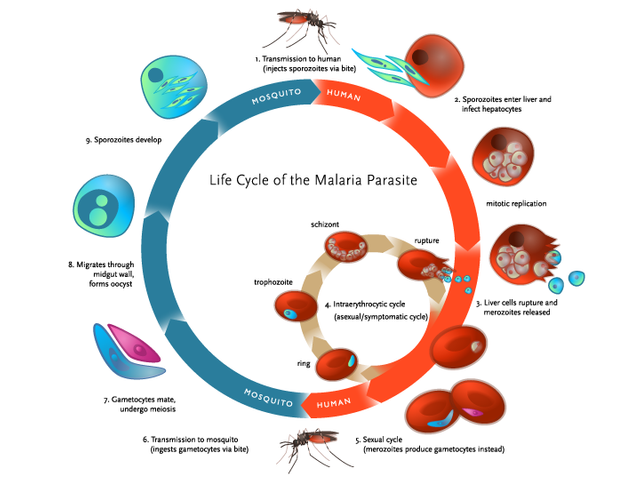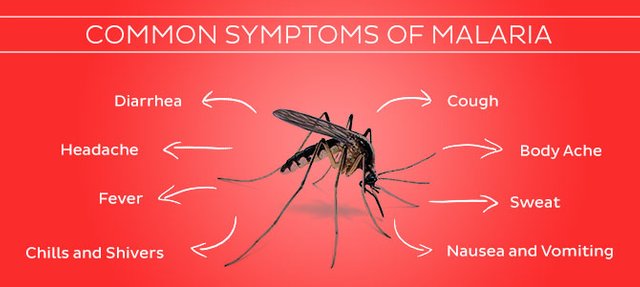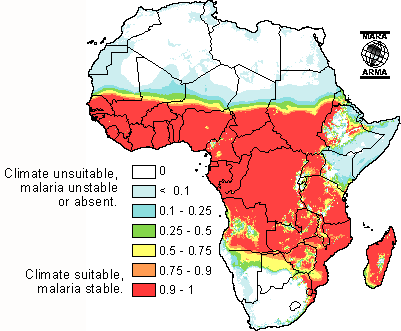The Malaria Epidemic: Meaning, Cause, Treatment and Prevention

Malaria is an Insect-borne disease that is widespread in the tropical and subtropical regions of the world. It is widely reported among the sub-saharan. Africa, Asia and Latin America killing people at a high rate. Malaria is said to kill faster than HIV/Aids.
WHAT IS MALARIA?
Malaria is a mosquito-borne disease caused by a parasite called plasmodium. Plasmodium is transmitted to humans during the process of feeding by the female anopheles mosquito.
The Female Anopheles Mosquito
The mosquito is an insect. There are 3, 500 species of mosquito grouped into 41 genera. It can also be called a fly which is involved in pollination along with other flies such as butterfly and bees. However, the female anopheles mosquitoes are the ones involved in blood feeding. They crave blood to carry out egg production. This is important to continue the cycle and prevent extinction of the insect. In the process of feeding, these mosquitoes could transmit a parasite known as plasmodium into man.
This is only possible if the mosquito itself is infected with the plasmodium parasite. Mosquitoes get infected by feeding on an already infected host (man or animals).
Mosquito Life-Cycle:

Eggs --> Larvae --> Pupae --> Adult mosquito.
About 50 to 200 eggs are layed in a stagnant water, they hatch within 2 to 3 days but can go as long as 2 – 3 weeks in colder climate. They develop structures that make them becomes larvae, from larva to pupae and then becomes adult mosquitoes ready to start the cycles all over.
Plasmodium
Plasmodium is a malaria causing parasite. It is a genus of the parasitic alveolates (meaning with cavities) which causes malaria when present in a host (In this case, man).
There are 200 known species of plasmodium but only five of them causes malaria in human, these are:
- Plasmodium knowlesi
- Plasmodium malariae
- Plasmodium ovale
- Plasmodium vivax
- Plasmodium falciparum
Facts about Plamodium faciparum:
- It is the most deadliest species of plasmodium.
- It causes roughly 50% of all malaria cases.
- It causes a type of malaria known as falciparum malaria.
- Falciparum malaria is the most drug resistant malaria.
- Over 75% of malaria cases in sub-Saharan Africa is due to plasmodium falciparum.
Life cycle of Plasmodium Parasite:
The parasite plasmodium has its life cycle both in insects (mosquito) and vertebrates (in this case man). When an infected mosquito bites a vertebrate host, sporozoites (these are plasmodium parasites in salivary glands of an infected mosquito) enters the bloodstream. These strong>sporozoites are transported to the liver.
In the liver, they invade and replicate within the cells of the liver (hepatocytes). Here in the hepatocytes, they can form a long dormant stage called hypnozoites which can remain in the liver for a very long time (many years). They are like inactivated plasmodium parasites. Soon, they emerge from the cells of the liver, they are now known as merozoites. They return to invade and attack red blood cells.
On invading the red blood cell, within the cell they grow into trophozoites and then mature into schizonts which divide several times to produce new merozoites and in the process, destroying the red blood cell. These merozoites invade other red blood cells and the process start over again. This process of red blood cell destruction continues until almost all red blood cells are invaded and destroyed.
Soon, the rate at which red blood cells are being destroyed would be higher than the rate at which the body produces it.
Symptoms of Malaria

Symptoms of malaria can be noted within an incubation period of 10 to 15 days. (Incubation period is the period between when an host is infected and when symptoms of infections are seen). Symptoms vary from person to person but below are the common symptoms of malaria:
- Vomiting
- Headache
- Fatigue
- Body aches
- Jaundice
- Brownish urine
- Body chills
- High Fever
- Diarrhea
Complications of Malaria
Malaria can lead to other complications which include:
- Cerebral Malaria
- Breathing problem
- Organ failure
- Anemia
- Low blood sugar
Diagnosis of Malaria
The most preferred and reliable method of malaria diagnosis is microscopic examination of blood films. It is very economical and in vast use in Africa. Other method of diagnosis include Antigen tests and Molecular Methods.
Treatments, Prevention and Evolution of Malaria Drugs
There is no existing preventive vaccination against malaria as control depends on anti-malaria drugs killing the parasite when in human body.
Evolution:
Ancient Chinese used Artemisinin during 168 bc for Malaria treatment which is still an active ingredient in some high end drugs today. The western world since the 17th century used quinine as a form of malaria treatment. Choloroquine was discovered in the 1930’s. This caused a revolution in malaria treatment. It became the most widely used drugs against malaria until the 1990’s. Plamodium parasites, Falciparum became resistant to the drug. Sulfadoxine-pyrimethanine (SP) which is a combination of two drugs replaced chloroqine. Resistance evolved rapidly to this drug.
Current Treatment:
The current treatment of malaria invoke is the use of Artemether and Lemefantrine.
Prevention of Malaria:
- Malaria can be prevented by different mechanism which include
- Use of insecticide
- Draining of stagnant water
- Pouring Kerosene and oil on stagnant water
- Covering your skin
- Use of mosquito repellent
- Use of Mosquito net
Re-occurrence
Malaria can reoccur after treatments. Re-occurrence is classified depending on cause. These cause include:
- Recrudescence: This is when symptoms of malaria returns after a symptom-free period. This is due to surviving parasites in the blood as a result of inadequate or ineffective treatment.
- Relapse: This is when symptoms appear after parasites have been eliminated but persist as dormant hypnozoites in liver cells. Symptoms usually occur 8 – 24 weeks after earlier treatment.
- Re-infection: This is due to exposure to the parasite afresh.
Malaria and Africa

Africa records 90% of diagnosis and death resulting from malaria. This is due to the fact that there is lack of medical attention, illiteracy, poverty and lack of affordability of drugs.
Malaria and Typhoid
Malaria in Africa, especially Nigeria is treated alongside with typhoid.
Malaria, Babies, Sickle Cell Patients and Pregnant Women
Malaria is a major cause of death cause of death among babies, sickle cell patients and pregnant women because of their reduced immunity to the disease. These parasites strive well and act faster in these people because of how conducive the body is.
Malaria Deaths
In 2005, 296 million cases of malaria was recorded which resulted in 731, 000 deaths. Rates of death from 2003 to 2015 increased by 37% and are still on the increase. This is majorly due to parasites developing resistance to treatments and medications.
Further Reading:
- https://www.nature.com/scitable/knowledge/library/evolution-of-drug-resistance-in-malaria-parasite-96645809
- https://www.cdc.gov/malaria/diagnosis_treatment/diagnosis.html
- https://en.wikipedia.org/wiki/Malaria
- https://www.mayoclinic.org/diseases-conditions/malaria/symptoms-causes/syc-20351184
Read Also:
- Hematopoiesis, Looking into how the body produces blood
- An Introduction to the medical worlds for non-medics
Image Source: [1] --- [2] --- [3] --- [4]
Thanks for reading...
